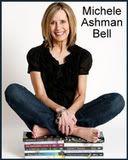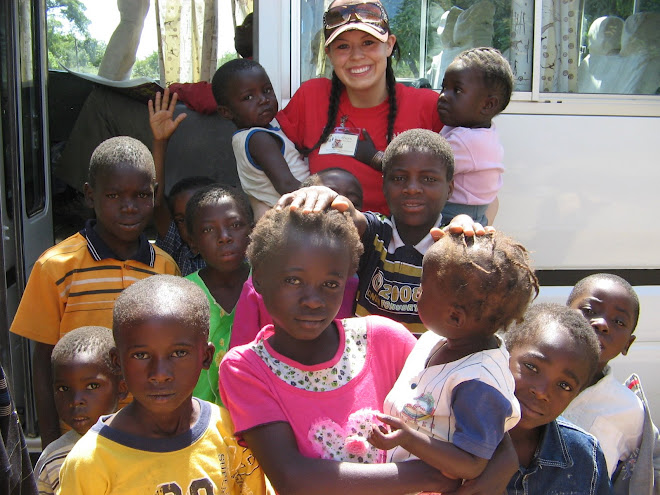
Lu Ann has received Utah’s top honors as an educator and she has won numerous awards for her writing. She's a highly respected editor and columnist and was tapped by Richard Paul Evans to ghostwrite Erin Herrin’s tender story about her battle to save daughters Kendra and Maliyah, her conjoined twins.
When Hearts Conjoin, is a story of courage and faith. I have always loved books about strong women, who face difficult obstacles, and triumph. This book is no exception. Erin Marie Herrin allows us to take this journey with her as she overcomes difficulties with her marriage and the heartwrenching challenge of separating her beautiful daughters, Maliyah and Kendra, who were born as conjoined twins.
Written in a candid and intimate way, When Hearts Conjoin, immediately drew me in and captured my heart. By the end I felt as though I knew these precious girls and their amazing story of surviving a surgery that separated them physically. Erin, and her husband, Jake, are remarkable in their strength amidst trial. They are human, to be sure, but their faith and determination are an inspiration to anyone who reads this book.
Here is my interview with Lu Ann:
M.B.: When did you first know you wanted to be an author?
Lu Ann: I had been telling people I wanted to be an author since I was in grade school, probably because I loved to read so much. I won the summer reading program two years in a row at our local Carnegie Library by reading more books than anyone else. After those two years I got special permission to move to the young adult section while still in grade school because I’d read everything in the elementary section of the library! Of course, it took me until I became an adult to figure out the whole query-letter and submission process and to start seeing my writing get published.
M.B.: What was the pathway like for you to get your first book published
Lu Ann: I’d written several books before this one, including three middle grade novels, a young adult novel, and two books meant for English teachers, but none of them had been published except Books, Books, and More Books: A Parent and Educator’s Guide to Adolescent Literature which I self-published. I’d heard Erin Herrin talk about her story at a WriteWise conference where I was presenting, and I thought, “Wow! I wish I could write that book,” but I never imagined I would get the opportunity. Then I was contacted by Richard Paul Evans and Karen Christofferson about writing a sample chapter.
M.B.: Were you ever discouraged along the way? If so, how did you deal with it?
Lu Ann: I wrote my first novel in 1995, and I’ finished several other since then. It has been discouraging to continually face rejections on each of those books. They are like my babies and I’m proud of them, but despite some nice feedback from editors and agents, nothing has clicked with being in the right place at the right time. I have been able to relieve some of my writer’s frustrations by continuing to publish in other venues. I write a regular newspaper column on literacy for the Spanish Fork Press, and I do book reviews for several educational journals. I’ve also have articles published in Scouting, Grit, Byline, and the LDS Church News. I credit all of those writing experiences for the way I was able to pull this book off in such a short time. We went from first interview to published book in nine months—just like giving birth!
M.B.: What is your writing schedule like?
Lu Ann: Schedule? Am I supposed to have one? My years of newspaper writing have taught me to work in little segments. I can write a 500 word article in less than an hour, so I looked at each scene of this book as though it were an article. Occasionally, I used time at school when my students were writing, but most of the time I would come home from work and spend an hour before dinner and another one after dinner, drafting out a complete chapter, then I would send it off as an email to Erin and spend another hour revising and polishing, or sending her more questions to be answered after she responded to what I had sent her.
M.B.: Where do your ideas come from? How do you know the idea is good enough to write a book about it?
Lu Ann: Of course, with this book that was obvious. When Hearts Conjoin is the first book written by the mother of a set of conjoined twins. People from around the world have stayed in contact with
M.B.: What words of advice do you have for other writers who desire to have their manuscripts become books in print?
Lu Ann: First, keep writing. Next, submit. You’d be amazed and how many people don’t even try to send in a manuscript, somehow thinking the opportunities will come to find them. Yes, that’s what happened for me in this case, but if I hadn’t already known Rick and Karen, if they hadn’t already known I could write and edit, they never would have asked me to write this book with
M.B.: What is your process of brainstorming a story? Do you just sit down and write, waiting to see what happens next? Or do you outline first?
Lu Ann: I do a combination of both, I suppose, but I very rarely have a formal outline. When I started to write When Hearts Conjoin, I began with a chapter that ended up being several chapters into the story, and then I wrote the next scene, then the next. Eventually, I was given the formal outline that one of the earlier writers had begun and I used that to go back in and fill in the gaps with details I hadn’t known about before. I do think about my story arc ahead of time. If I start here, then the initial incident needs to predict the climax, so if I want to end there, where is my real starting point? It’s the kind of outlining I teach my students and it works pretty well. I also start early on to consider the arc for a secondary character and a sub-plot for the main characters.
M.B.: Do you ever experience a snag in a story, a form of writer's block? If so, how do you deal with it?
Lu Ann: When I wrote my first novel, Leona & Me, Helen Marie, I would get to the end of a chapter and think, “Well, that’s it. No more story. I guess I’m done,” then I would hear my mother’s voice whisper to me, “What about. . .” and I realized that idea would work great as the next chapter. Now before you all think I’m crazy, hearing voices in my head, I actually had been reading my mother’s journals while I wrote this book. Mom had just passed away a few months before and her voice was still strong in my head, and in my heart. I really felt like the two of us collaborated on that book, despite the fact she was gone. Usually when I hit a snag, I just write my way through it. Even if I write nothing but stupid scenes for a couple of pages, it gets me past the snag. Once I find something that works, I can go back and get rid of the space savers that were failures as scenes.
M.B.: Do you need absolute quiet to write? Do you listen to music when you are writing?
Lu Ann: I can’t write with music at all. I love music, but I can’t handle the conflicting rhythms of lyrics and sentences inside my head. I don’t need absolute quiet, however, and that’s a good thing since I either write in a house filled with five boys and all of their friends, or in a classroom with thirty seventh graders who are also supposed to be writing. Some projects do require a little more concentration at various stages of the writing, and on those days my husband will gather up all the boys and half the neighborhood and go to a movie or to run errands, giving me an hour or more to work in my office.
M.B.: What kinds of inspiration do you use during your story creation periods?
Lu Ann: Does pounding my head against the wall count? No, really I stopped doing that when I was a child. Now I just get up and walk away from the computer. I’ll go read (my favorite thing in the whole wide world!) or channel surf, maybe settle on a movie to watch, or go to bed and let the problem work out in my sleep. Sometimes I’ll ask my husband for an idea, but that’s not always successful. He did give me the title of my recent article in Deseret Saints Magazine—The Good Husband. I’m not sure the article I wrote is quite what he had in mind though.
M.B.: Who has made the greatest difference for you as a writer?
Lu Ann: There are so many ways I could answer this question. Richard Paul Evans made a huge difference in giving me the opportunity to write this book and to be my publisher. Alan Osmond taught me to believe in myself and let me learn how to write scripts by practicing on Stadium of Fire. Carol Lynch Williams has been my good friend and mentor for many years. I’ve had many wonderful writers as teachers as well—Joan Bauer, John H. Ritter, Alane Ferguson, Chris Crowe. And of course, the members of my critique group, both past and present.
M.B.: Do you use a critique group during the writing process? Why or why not?
Lu Ann: Absolutely. I rely on my critique group at all stages of my writing. They provide a good place to bounce around ideas for plotting, characters, and even marketing. Each member of my critique group has their own strengths, and we can really feel it when someone is missing a particular night. If you know my group, then you know what a great group they are—Annette Lyon, Heather Moore, Michele Holmes, Rob Wells, and J. Scott Savage. We are tough on each other, but look at the quality of work we produce. I’m just like a proud parent when every one of their books comes out because I’ve been right there to see that book born. It’s an awesome experience.
M.B.: Which of your books is your favorite, and why?
Lu Ann: This is one of those parent moments as well. How can I not love them all? Leone and Me, Helen Marie is about my mother and her older sister as they grew up during the depression; A Note Worth Taking is about my own teenage years and the angst of finding friendships; Just Like Elizabeth Taylor started as a kernel of an idea with a set of characters that insisted they get to tell their story despite the fact it wasn’t what I thought I’d write about; and The Explorers: Tides Across the Seas started out as an adult suspense novel but demanded that I start over and tell a tale of Aztecs and explorers wrapped in a simple love story. Even the books meant for the educational market carry my passions for teaching reading and writing. And then we know that When Hearts Conjoin was a labor of compassion, meant to tell a mother’s story for the benefit of her children.
M.B.: Any final words you would like to share
Lu Ann: Thanks for this opportunity to share my story and some insight into my writing with your readers. I’m busy working on my next project, Super Mind with entertainer and mentalist Jim Karol. Right behind that is a book with Alan Osmond titled Life is T.U.F.F. and I’m also working on a couple of novels that I hope to have finished by the end of the year, so with any luck between all those projects I’ll have another book out before too long.
M.B.: Where can our readers go to find your books and order them?
Lu Ann: When Hearts Conjoin can be ordered online at www.UtahTwins.com. Proceeds from the book sales go into a trust fund for medical expenses for the Herrin twins. First chapters can be found online for three books at: www.whenheartsconjoin.blogspot.com; www.tidesacrossthesea.blogspot.com ; and http://utahchildrenswriters.blogspot.com/2009/04/30-days-icing-on-cake.html. Books, Books, and More Books can be purchased on CD –ROM directly from me. Email me at luannbrobststaheli@gmail.com and I’ll send you details about the text and the ordering information.



























































-page-001.jpg)














3 comments:
Wonderful interview.
What a heart-wrenching story of the Herrin twins. I'm glad LuAnn could tell it to the world.
Thanks!
Just revisiting those old titles in this blog brought to mind the great stories they are, and made me long to see them in print!
Lu Ann, you are the best example of perseverance I know.
Michele, what an interesting interview. I learned things about my good friend that I didn't know before.
Now that was a fantastic interview! I have been meaning to interview LuAnn for my blog, but I am not sure what else there is to ask her now. Thanks for always doing such a great job Michelle!!
Post a Comment